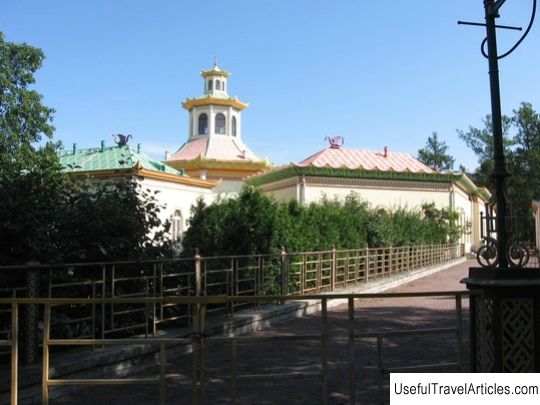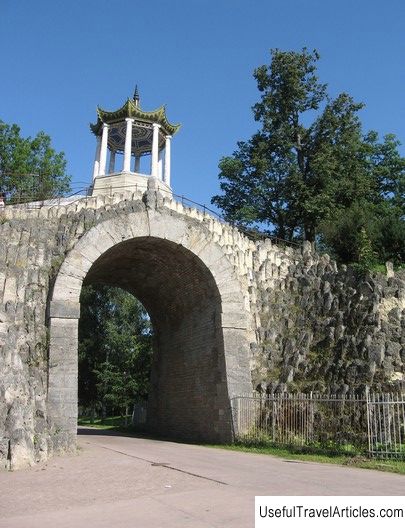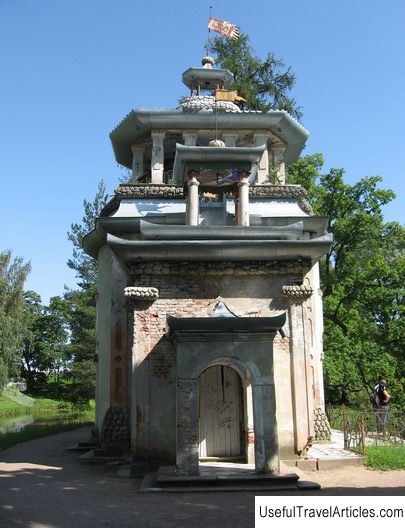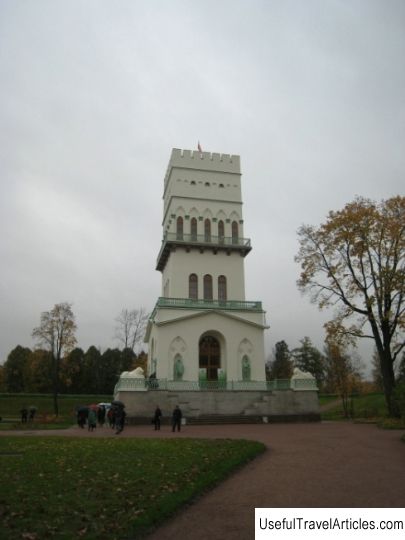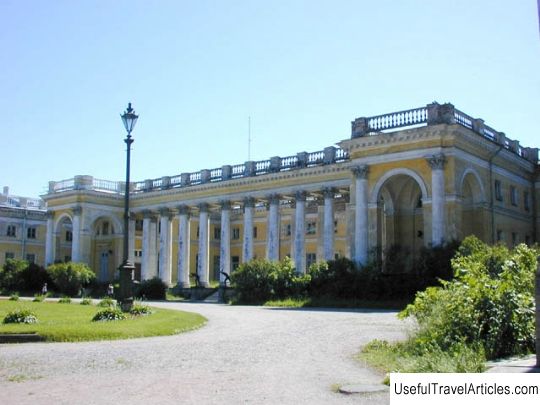Chinese theater description and photo - Russia - St. Petersburg: Pushkin (Tsarskoe Selo)
Rating: 7,8/10 (2545 votes) 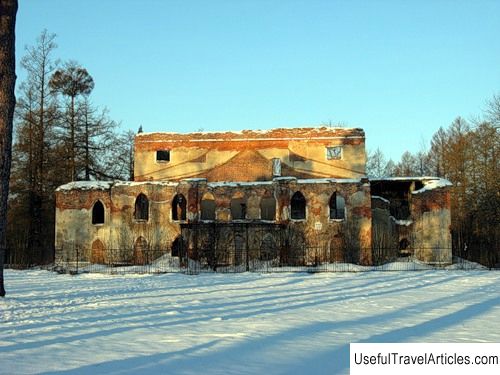
Chinese theater description and photos - Russia - St. Petersburg: Pushkin (Tsarskoe Selo). Detailed information about the attraction. Description, photos and a map showing the nearest significant objects. Photo and descriptionThe Chinese theater is currently a ruined building of the court summer theater, located on the left side of the entrance to the Tsarskoye Selo Alexander Park. During the reign of Empress Catherine II the Great, the Chinese theater was called the Stone Opera. According to the original plan, it was planned to build an "air theater" in its place - an open-air theater with sod benches. The plan of the Chinese theater, laid down in the 78th year of the 18th century, was developed by the architect Antonio Rinaldi, and the construction was supervised Ilya Vasilievich Neelov, who in some way changed the original project. The building had completely European features; the external decor and architectural forms of the theater were distinguished by relative simplicity: the white walls were decorated with pilasters, a wide cornice and narrow frames for windows and doors. The cornice, most likely destroyed during renovations in the 19th century, had an intricate design and was multi-colored, and only a high roof with curved "Chinese" corners characterized the architect's desire to create an exotic building. The interior of the Chinese theater was notable for its splendor. The main box, plafond, stage portal - everything was decorated with dragons, Chinese figures, shields with zodiac signs and other details of oriental decor. The interior was enlivened by bells, beads, pendants, carved out of wood, variegatedly painted, silvered and gilded. The decor of the boxes was made of painted cardboard with a backing of shiny foil. The central imperial and 2 side grand ducal boxes were decorated with genuine works of Chinese art: porcelain, decorative lacquer panels, furniture. In 1779, the famous decorator I. Christ painted on the orange silk curtain in the form of scenes and landscapes in the "Chinese style". The first performance on the stage of the Chinese Theater was shown on June 13, 1779. The Italian composer Giovanni Paisiello presented the opera “Dmitry Artaxerxes” to Empress Catherine II. On August 16, the opera "Chinese Idol" by the same author was shown. The performances were shown in the summer of 1780 and 1781. Under the empress, the summer seasons in the Chinese theater were intense. In the 19th century, there was a lull in the theater. Occasionally the imperial court of Nicholas I attended theatrical performances. By the way, in the summer of 1830, an opera by the Italian composer Gioacchino Rossini "The Barber of Seville" with the participation of the famous German singer Henrietta Sontag took place on the stage of the Chinese Theater. The theater revived at the end of the 19th century. So, in 1892, the play by Leo Nikolaevich Tolstoy "The Fruits of Enlightenment" was staged here for the first time, and a year later the students of the Nikolaev gymnasium showed the tragedy of Sophocles "King Oedipus". In 1902, French President Emile Loubet visited Russia. For this event, a parade performance was staged in the theater, for which electric lighting was arranged in the building. At the beginning of the 20th century, a troupe of guards officers, including Grand Duke Konstantin Konstantinovich, played on the stage of the Chinese theater "Princess of Dreams" by Edmond Rostand and "The Messina Bride" by Friedrich Schiller. The popular parody theater "Crooked Mirror" also performed here. In 1908-1909, under the direction of the court architect Silvio Amvrosievich Danini, a major overhaul of the building was organized. The 18th century stage has been refurbished with the latest technology for staging large ballet and opera performances. An improved heating system made it possible to use the summer theater all year round.  We also recommend reading Beer Hofbraeuhaus description and photos - Germany: Munich Topic: Chinese theater description and photo - Russia - St. Petersburg: Pushkin (Tsarskoe Selo). |
